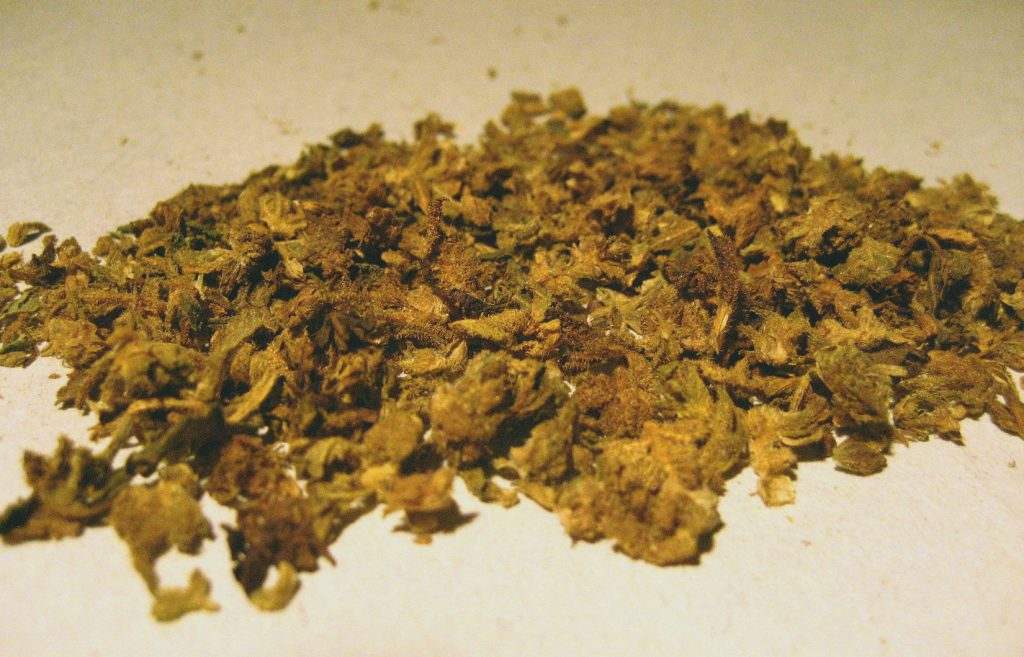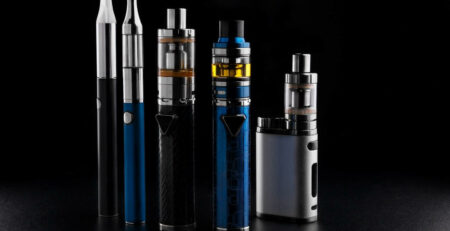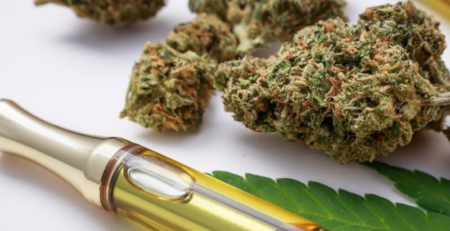How to Make Cannaoil With ABV
Cannaoil is a versatile ingredient that can be used in many recipes, from baked goods to savory dishes. It is made by steeping cannabis in oil and extracting the cannabinoids and terpenes into the oil. This process results in a potent and highly concentrated form of cannabis that can be added to various dishes for both recreational and medicinal purposes.
One way to make cannaoil at home is by using already been vaped (ABV) cannabis. ABV cannabis refers to the leftover, partially decarboxylated plant material that remains after vaping. This guide will walk you through the steps of making cannaoil with ABV, providing an easy and budget-friendly method for creating this powerful ingredient.
Understanding ABV Cannabis
Before diving into the process of making cannaoil with ABV, it is important to understand what exactly ABV cannabis is and how it differs from fresh or dried cannabis. When cannabis is heated, either through smoking or vaping, the heat activates the cannabinoids present in the plant. This process, known as decarboxylation, converts the non-psychoactive compounds (THCA and CBDA) into their psychoactive forms (THC and CBD).
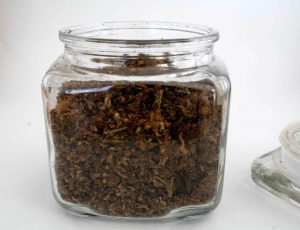
However, when vaping cannabis, the heat is not as intense as smoking, resulting in a partially decarboxylated product. This means that some of the cannabinoids are already activated but not all of them. ABV cannabis typically has lower levels of THC and CBD compared to fresh or dried cannabis, but it still contains enough cannabinoids to be used in cooking and baking.
The Benefits of Using ABV Cannabis for Cannaoil
- Cost-effective: Using ABV cannabis for cannaoil saves money by repurposing a byproduct of vaping, reducing the need to purchase fresh cannabis for cannaoil production.
- Potent: Despite reduced cannabinoid concentration compared to fresh cannabis, ABV cannabis retains enough potency to create effective cannaoil.
- Efficient Metabolism: ABV cannabis, partially decarboxylated during vaping, is easier for the body to metabolize, ensuring significant impact of resulting cannaoil for recreational or therapeutic use.
- Resourceful: Turning ABV cannabis waste into a valuable resource maximizes the return on the original cannabis material investment, making it an excellent choice for homemade cannaoil.
What You’ll Need to Make Cannaoil With ABV
To make cannaoil with ABV, you will need the following equipment:
- ABV cannabis (at least 7 grams)
- Cooking oil of your choice (coconut, olive, vegetable, etc.)
- Mason jar or airtight container
- Fine mesh strainer or cheesecloth
- Slow cooker or saucepan
- Thermometer (optional)
Steps for Making Cannaoil with ABV Cannabis
Step 1: Decarboxylate the ABV Cannabis
To fully activate all of the cannabinoids in the ABV cannabis, it is important to decarboxylate it before infusing it into oil. This can be done by spreading the ABV onto a baking sheet and placing it in an oven at 240°F (115°C) for 30-45 minutes. The ABV will turn a slightly darker color once decarboxylated.
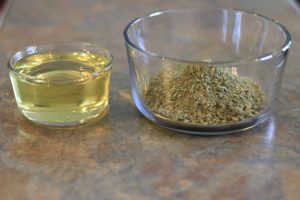
Step 2: Combine the Decarboxylated ABV with Oil
Place the decarboxylated ABV and oil of your choice in a mason jar or airtight container, making sure that the cannabis is fully covered with oil. If using a slow cooker, set it on low heat and let it cook for 4-6 hours. If using a saucepan, place it on low heat and let it simmer for 2-3 hours. Stir occasionally to prevent burning.
Step 3: Strain the Mixture
After the cooking time is complete, strain the mixture through a fine mesh strainer or cheesecloth into a clean container. Press down on the cannabis with a spoon to extract as much oil as possible.
Step 4: Cool and Store
Let the cannaoil cool before storing it in an airtight container. It can be stored in the refrigerator for up to 2 months or in the freezer for up to 6 months.
Tips and Tricks
- Use a thermometer if possible to make sure that the oil does not exceed 240°F (115°C), as this can degrade the cannabinoids.
- For a stronger infusion, use more ABV cannabis or let it infuse longer.
- If the oil has a strong, bitter taste, try adding a few drops of essential oils or flavor extracts to mask it.
- Use caution when consuming cannaoil, as its effects may be stronger than traditional edibles since ABV cannabis already contains activated cannabinoids.
Additional Uses for Cannaoil
Cannaoil can be used in a variety of ways, including:
- As a cooking oil for sautéing or roasting vegetables, meats, or seafood.
- As an ingredient in baked goods such as brownies, cookies, or cakes.
- As a spread on toast or crackers.
- As a replacement for butter or oil in salad dressings.
- To make homemade cannabis capsules by filling empty gel capsules with the oil.
- To mix into smoothies or milkshakes for a discreet and tasty way to consume cannabis.
Remember to always start with a small amount and wait at least 2 hours before consuming more, as the effects of edibles can take longer to kick in than other methods of consumption. Also, be sure to label your cannaoil clearly and keep it out of reach from children and pets. Enjoy your homemade cannaoil responsibly! Happy cooking!
Safety Precautions When Making Cannaoil
- Always use caution when infusing oil with cannabis, as the process involves working with hot oil and can be dangerous if not done correctly.
- Keep a fire extinguisher nearby in case of any accidents.
- Use oven mitts or other protective gear when handling hot oil to avoid burns.
- If using a slow cooker, make sure it is on a stable surface away
Storing Your Cannaoil
Cannaoil can be stored in an airtight container or jar in a cool, dark place for up to 6 months. You can also store it in the refrigerator for longer shelf life. Just make sure to label it clearly and keep it out of reach from children and pets.
Experiment with Different Strains
Just like with other methods of cannabis consumption, different strains can have different effects and flavors when used in cannaoil. Feel free to experiment with different strains to find the one that works best for you and your desired outcome. You can also mix and match strains to create your own unique blend of cannaoil. Have fun and get creative!
Conclusion
In conclusion, we’ve covered essential steps and tips for making your own cannaoil at home, focusing on using Already Been Vaped (ABV) cannabis. We’ve discussed how to prepare the cannabis, choose the right carrier oil, and the importance of low and slow cooking to avoid overheating. Safety precautions are paramount to ensure the process is both enjoyable and safe. We’ve also highlighted the significance of proper storage and the exciting possibility of experimenting with different strains to tailor the effect and flavor profiles to your preferences.
We encourage our readers to approach the creation of cannaoil with curiosity and caution. Remember, starting with a small dose and waiting to understand its effect is key to a pleasant experience. Experimentation with different strains and recipes can unlock a personalized and enjoyable way to consume cannabis. Always consume responsibly, keep your creations out of reach of those who should not have access, and enjoy the process of discovery that comes with making your own cannaoil. Happy experimenting!
References
- “How to Make Your Own Cannabis-Infused Oil.” Leafly, 24 June 2020,
https://www.leafly.com/news/cannabis-101/what-is-cannabis-infused-oil - “Canna-Oil Recipe for How to Make Canna-Olive Oil.” Leafly, 10 May 2017,
https://www.leafly.com/news/lifestyle/recipe-how-to-make-canna-oil - “Cannabis Infused Cooking Oil Recipe.” Wake + Bake, 5 Apr. 2018,
https://wakeandbake.co/cannabis-infused-cooking-oil-recipe/ - “How to Make the Best Canna-Oil.” High Times, 19 July 2014,
https://hightimes.com/edibles/how-to-make-the-best-canna-oil/ - “12 Tips for Making Better Cannabutter and Canna Oil.” Leafly, 8 Apr. 2020,
https://www.leafly.com/news/lifestyle/12-tips-for-making-better-cannabutter-and-oil - “Cannabis-Infused Cooking Oil.” The Spruce Eats, 4 May 2020,
https://www.thespruceeats.com/cannabis-infused-cooking-oil-recipe-1806837

